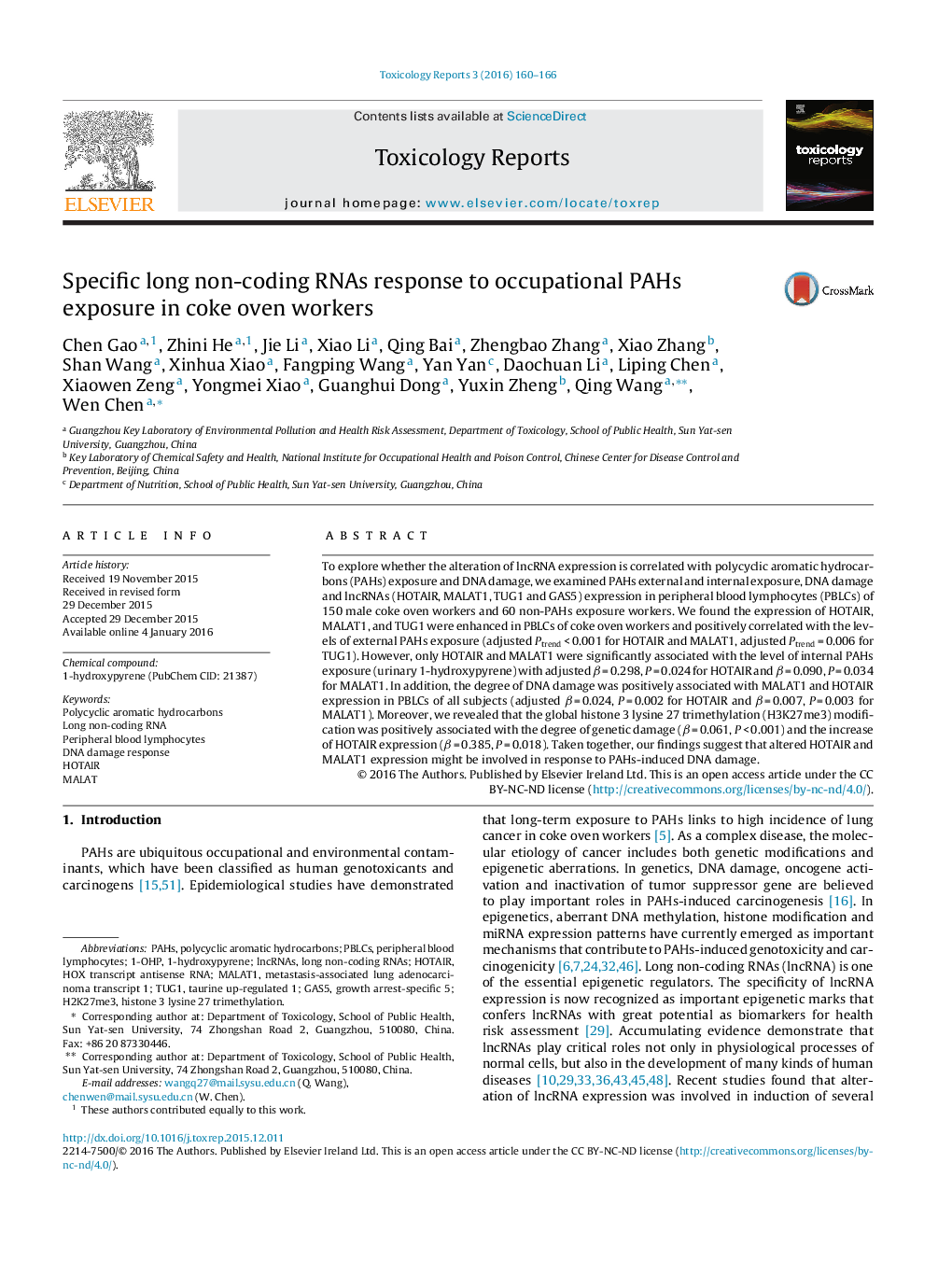| کد مقاله | کد نشریه | سال انتشار | مقاله انگلیسی | نسخه تمام متن |
|---|---|---|---|---|
| 2572118 | 1561191 | 2016 | 7 صفحه PDF | دانلود رایگان |
• HOTAIR and MALAT1 were upregulated in PBLCs of PAHs-exposed workers.
• HOTAIR and MALAT1 expression was positively associated with the degree of DNA damage induced by PAHs.
• H3K27me3 modification was positively correlated with the degree of genetic damage and the increase of HOTAIR expression.
To explore whether the alteration of lncRNA expression is correlated with polycyclic aromatic hydrocarbons (PAHs) exposure and DNA damage, we examined PAHs external and internal exposure, DNA damage and lncRNAs (HOTAIR, MALAT1, TUG1 and GAS5) expression in peripheral blood lymphocytes (PBLCs) of 150 male coke oven workers and 60 non-PAHs exposure workers. We found the expression of HOTAIR, MALAT1, and TUG1 were enhanced in PBLCs of coke oven workers and positively correlated with the levels of external PAHs exposure (adjusted Ptrend < 0.001 for HOTAIR and MALAT1, adjusted Ptrend = 0.006 for TUG1). However, only HOTAIR and MALAT1 were significantly associated with the level of internal PAHs exposure (urinary 1-hydroxypyrene) with adjusted β = 0.298, P = 0.024 for HOTAIR and β = 0.090, P = 0.034 for MALAT1. In addition, the degree of DNA damage was positively associated with MALAT1 and HOTAIR expression in PBLCs of all subjects (adjusted β = 0.024, P = 0.002 for HOTAIR and β = 0.007, P = 0.003 for MALAT1). Moreover, we revealed that the global histone 3 lysine 27 trimethylation (H3K27me3) modification was positively associated with the degree of genetic damage (β = 0.061, P < 0.001) and the increase of HOTAIR expression (β = 0.385, P = 0.018). Taken together, our findings suggest that altered HOTAIR and MALAT1 expression might be involved in response to PAHs-induced DNA damage.
Journal: Toxicology Reports - Volume 3, 2016, Pages 160–166
